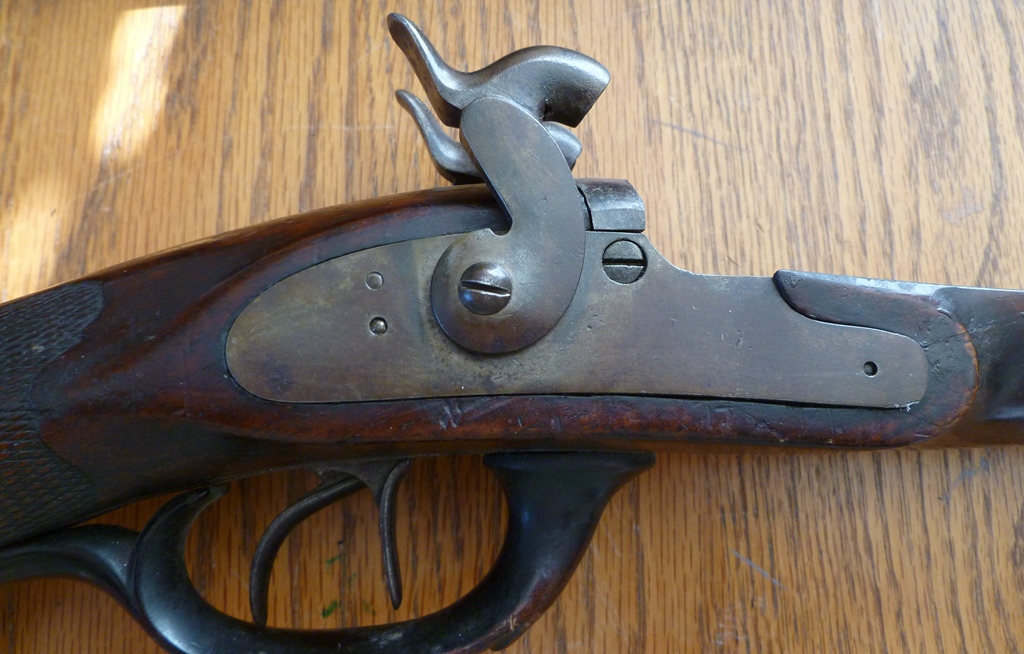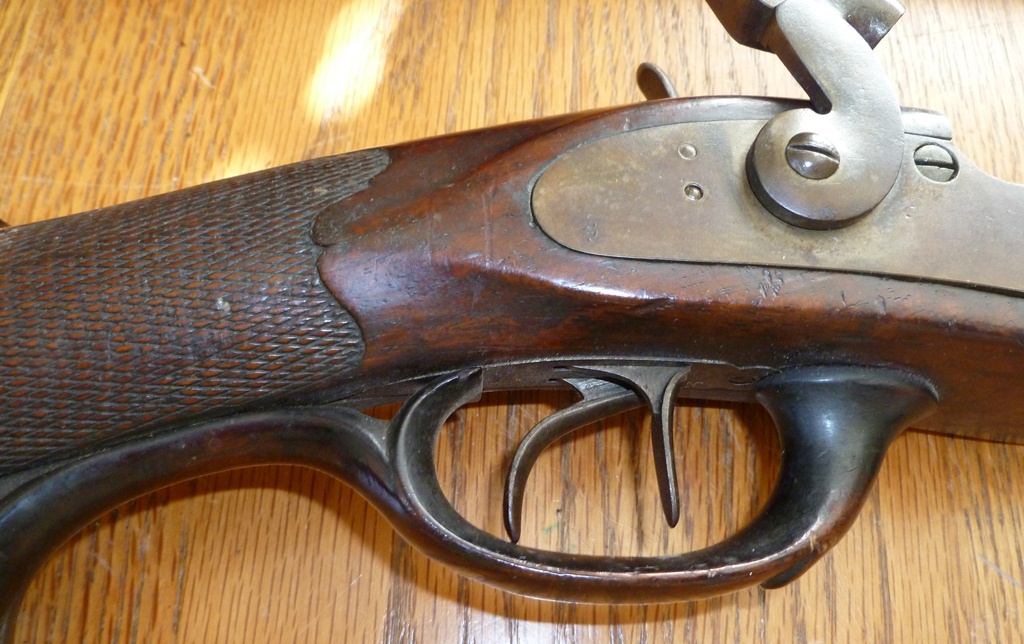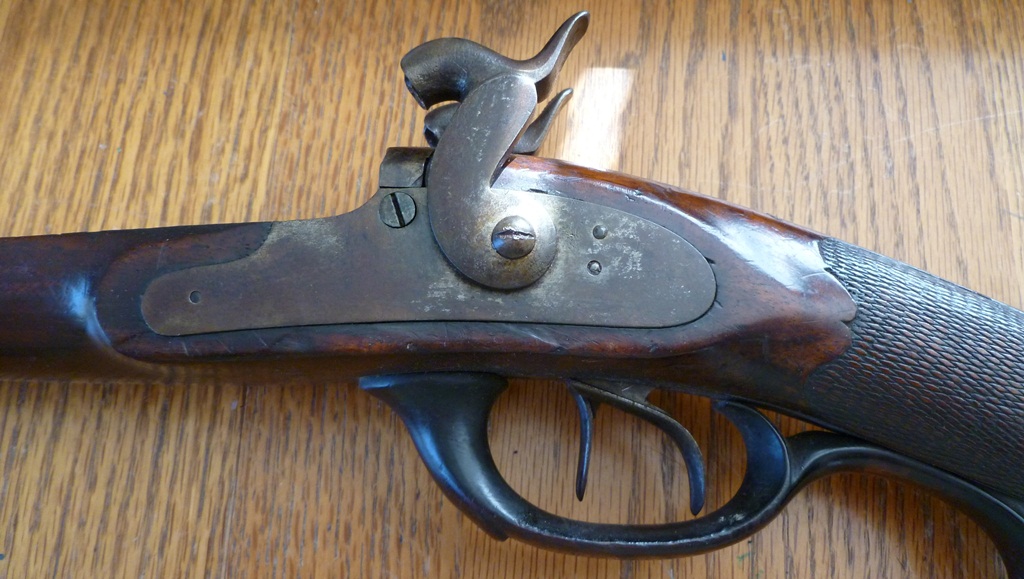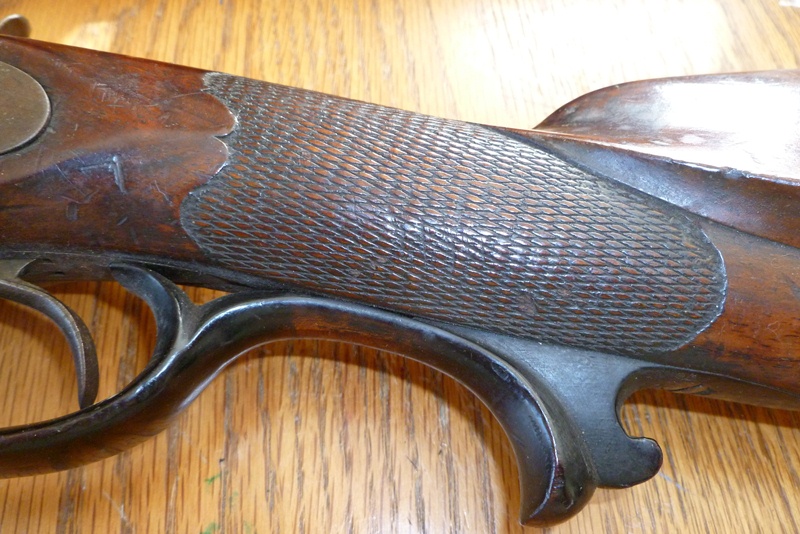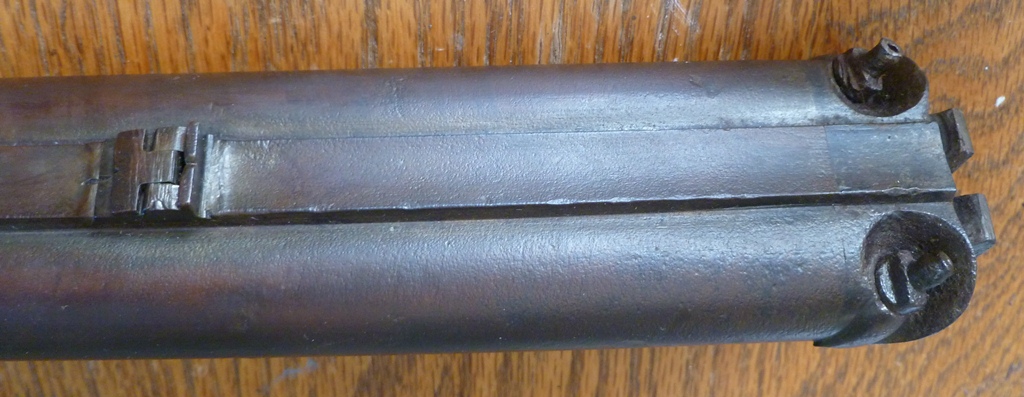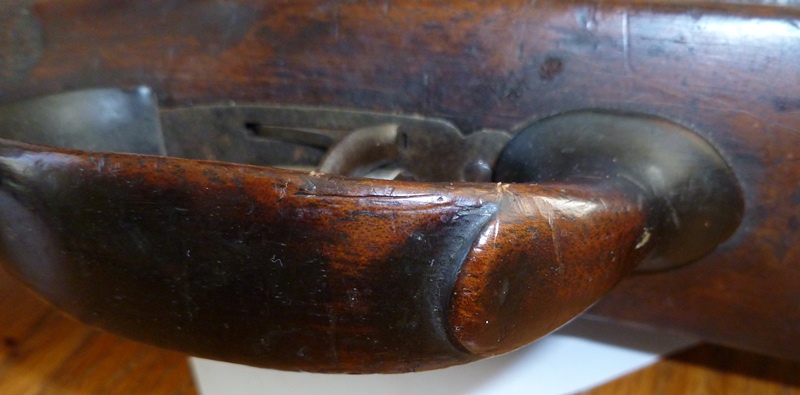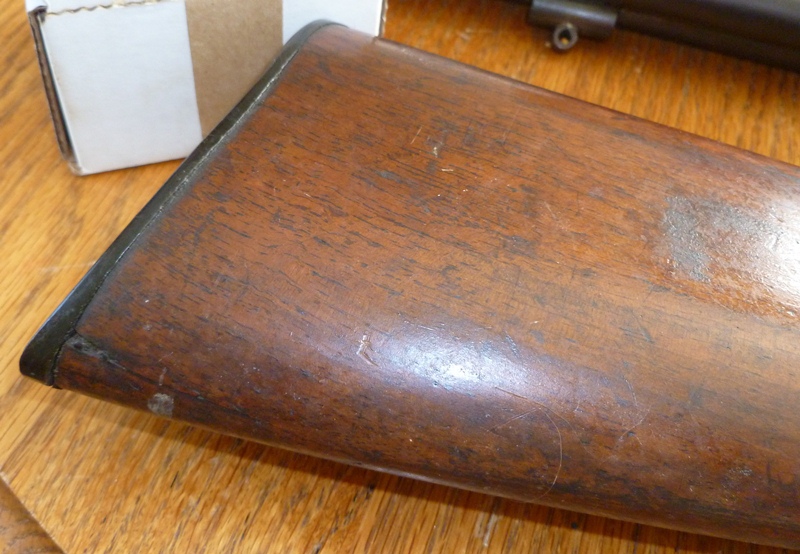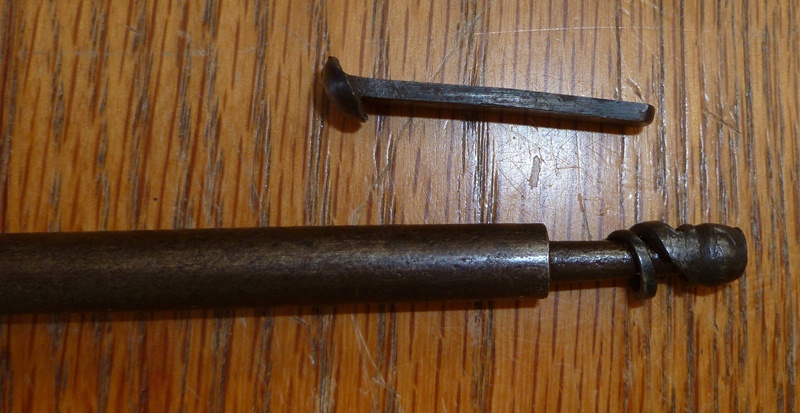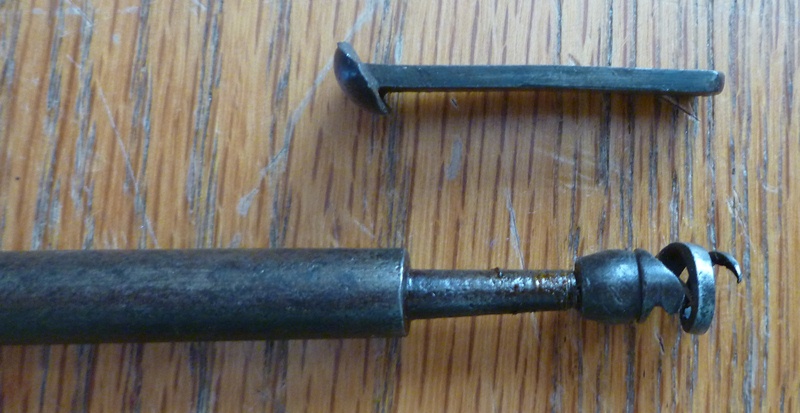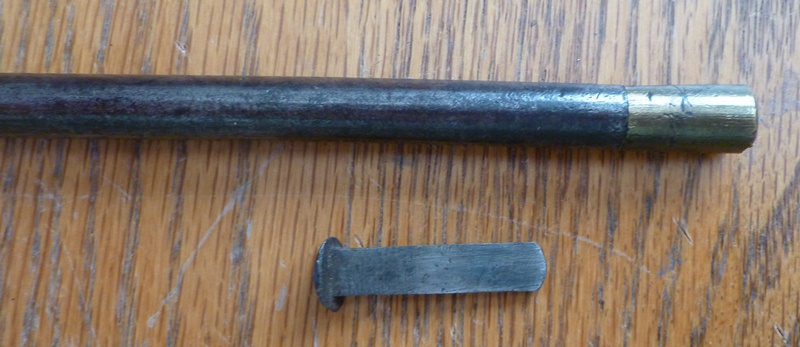A couple years ago I picked up this old gun from a dealer and acquaintance. He hunts in Africa every other year or so and had bought with the intent to take some game in a more traditional fashion (he has previously hunted with a Martin-Henry rifle), but for whatever reason changed his mind about using this gun. It was listed as a 12 ga side by side with one smooth bore and one rifled bore. I think it is actually not quite a 12 ga, though.
Here she is:


I've got lots of pics, so I'll put 'em all up for your enjoyment. I pulled the barrels today for the first time to check for any proof or makers marks. I did find pretty standard Beligian proof (circled ELG over a star) and inspection mark (crown over A) and a "40", but nothing like a maker ID.
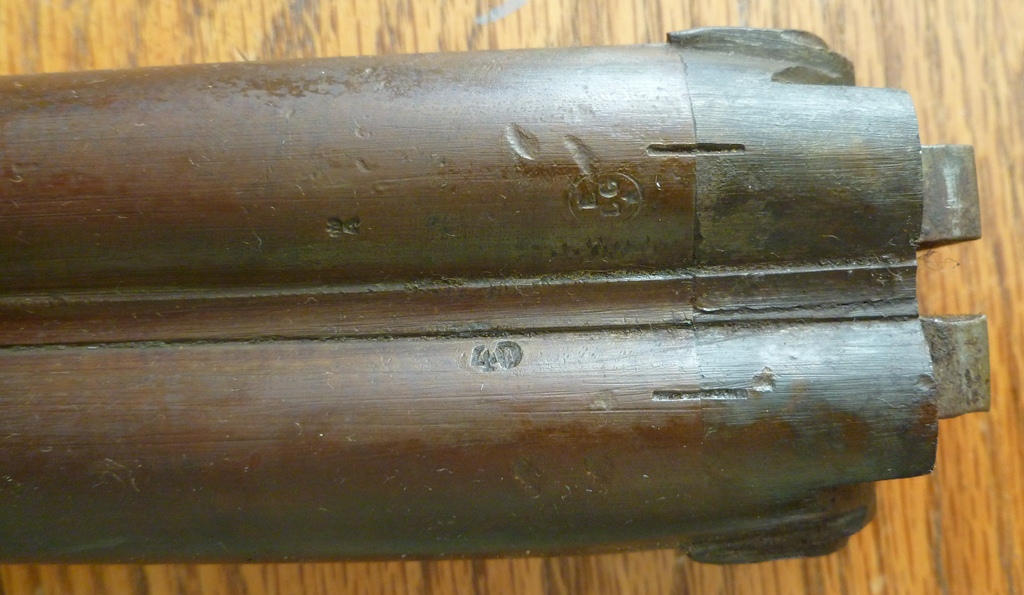
The gun came with some lead balls, including .690 and .670 RBs and some "button" bullets that measure about .668 (pics). I measured the smooth bore at about .668. The rifled barrel is about pentagonal, so I couldn't really get a good measurement. Here's the muzzle shot and with a .670 ball sitting in the smooth bore and a .690 in the rifled bore.
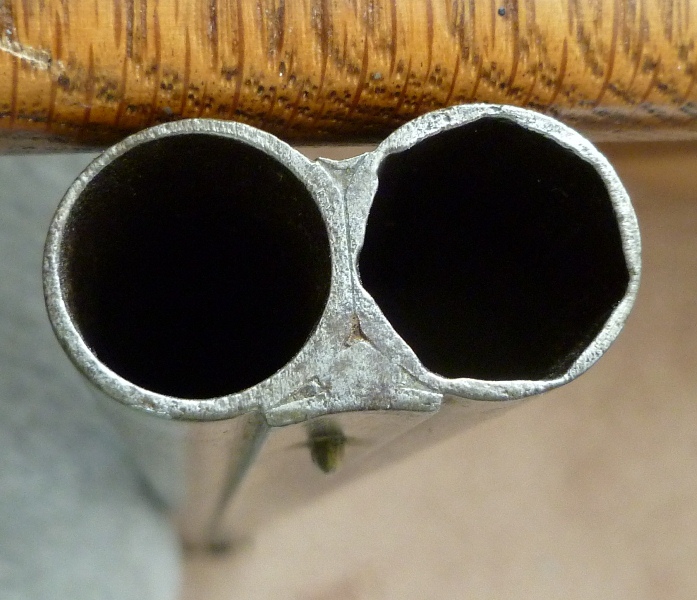
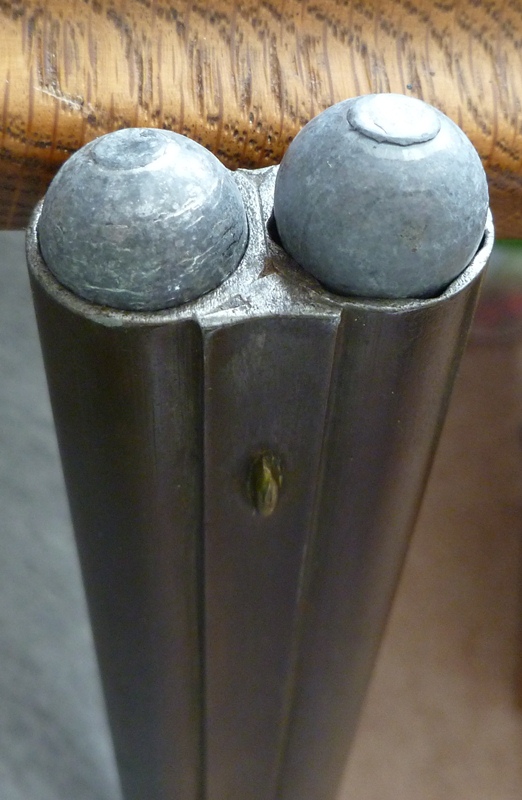
More pics coming in the next post.
Rob
Here she is:


I've got lots of pics, so I'll put 'em all up for your enjoyment. I pulled the barrels today for the first time to check for any proof or makers marks. I did find pretty standard Beligian proof (circled ELG over a star) and inspection mark (crown over A) and a "40", but nothing like a maker ID.

The gun came with some lead balls, including .690 and .670 RBs and some "button" bullets that measure about .668 (pics). I measured the smooth bore at about .668. The rifled barrel is about pentagonal, so I couldn't really get a good measurement. Here's the muzzle shot and with a .670 ball sitting in the smooth bore and a .690 in the rifled bore.


More pics coming in the next post.
Rob





